The cultivation of coffee (Coffea arabica and other species) is an intricate process that demands a deep understanding of each of its phenological stages to achieve excellence in production. From the tiny seed to the ripe cherry ready for harvest, each phase presents unique requirements and opportunities to influence the final quality and yield of the bean. This comprehensive guide delves into each stage of the coffee life cycle, providing essential technical information and advanced strategies for producers seeking to maximize the potential of their coffee farms.
Breaking Down the Phenological Stages of Coffee for Excellence in Production
Stage 1: Germination and Seedling Development – The Beginning of a New Life
The germination of the coffee seed marks the beginning of a new cycle. This process is activated by the absorption of water, which breaks the seed’s dormancy and initiates the development of the embryo. To ensure successful germination, it is crucial to use fresh and viable seeds and provide optimal conditions of humidity (high, but without waterlogging), controlled temperature (between 20-25°C), and a suitable substrate (such as sand or special seedling mixes). Germination can take between two and three weeks, depending on the variety and environmental conditions.
Once the seedling emerges from the soil, it enters an early development phase that requires meticulous care. It is essential to protect the young seedlings from direct and intense sunlight, providing partial shade to prevent leaf burn. Watering should be frequent but moderate, keeping the substrate moist without saturation. Nutrition at this stage should be balanced, with a slight emphasis on phosphorus to promote strong root development. Prevention of fungal diseases, such as damping-off (Rhizoctonia solani), is crucial in nurseries.

Stage 2: Vegetative Growth – Strengthening the Structure for Future Production
The vegetative growth stage is characterized by the rapid development of leaves, primary stems, and secondary branches (plagiotropic). During this phase, the coffee plant establishes the structure that will support future harvests. Proper irrigation management is essential, adjusting the frequency and amount according to climatic conditions and the age of the plant. Nutrition plays a fundamental role, with a balance between nitrogen (for leaf and stem growth), phosphorus (for root development and initial flowering), and potassium (for plant robustness and disease resistance).
Formation pruning is a crucial practice during vegetative growth. By eliminating unwanted basal shoots and selecting the primary branches that will form the bush’s framework, an open structure is promoted, facilitating light and air penetration, essential for photosynthesis and plant health. Pruning also contributes to a more efficient distribution of resources. Weed control, which competes for water and nutrients, and monitoring for pests such as the stem borer and foliar diseases are important to ensure optimal vegetative development.
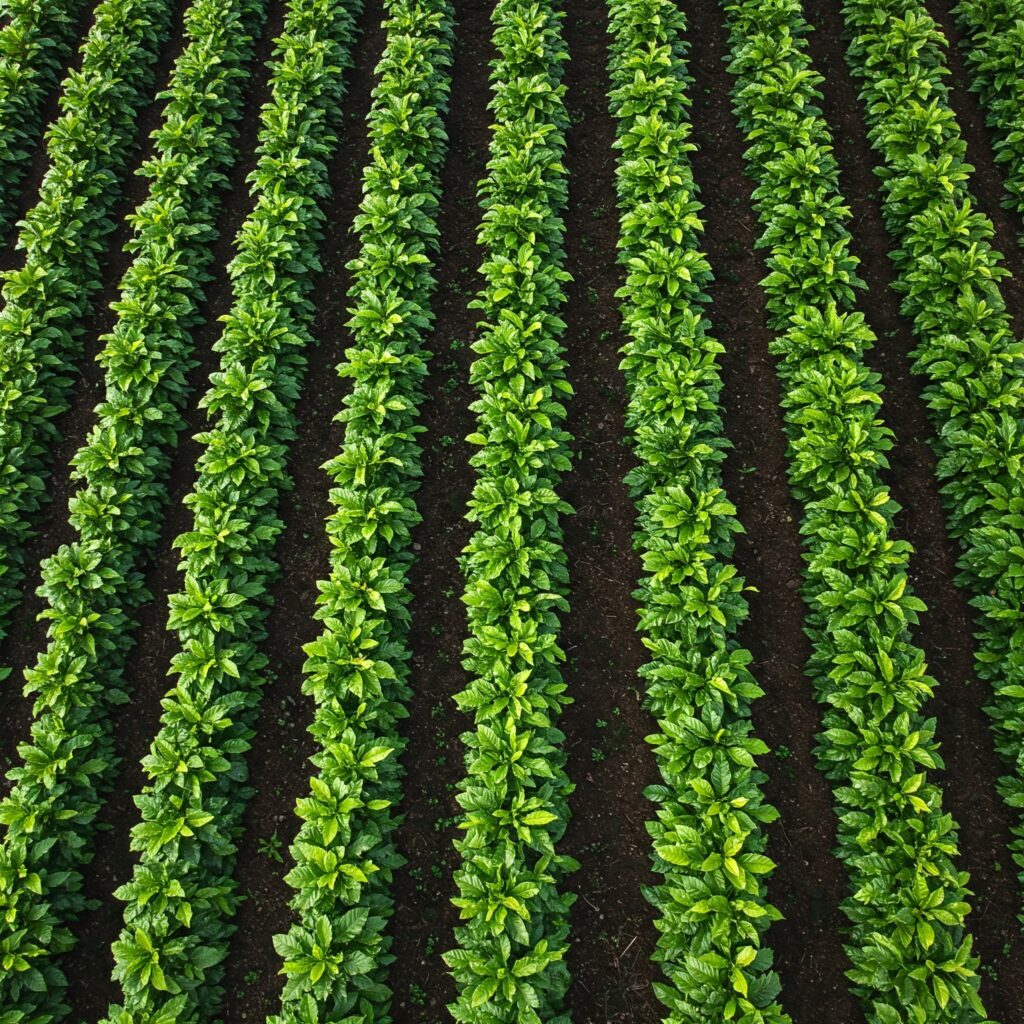
Stage 3: Flowering – The White Spectacle Announcing the Harvest
Coffee flowering is a spectacular event, generally triggered by the onset of rains after a dry period. The flower buds, which develop in the axils of the leaves along the plagiotropic branches, open in a profusion of small, white, and fragrant flowers. Pollination, which in most varieties of Coffea arabica is self-pollination (autogamy), is fundamental for fruit formation. In some regions, cross-pollination by insects can occur and, in certain cases, improve yield.
Management during flowering focuses on ensuring optimal conditions for pollination and fruit set. Adequate irrigation is crucial to avoid water stress that could lead to flower drop. Nutrition, especially the supply of potassium and boron, plays an important role in floral development and fruit set. Monitoring for pests that can damage flowers, such as thrips, is important. Adverse weather conditions, such as torrential rains or late frosts, can negatively affect flowering and yield.
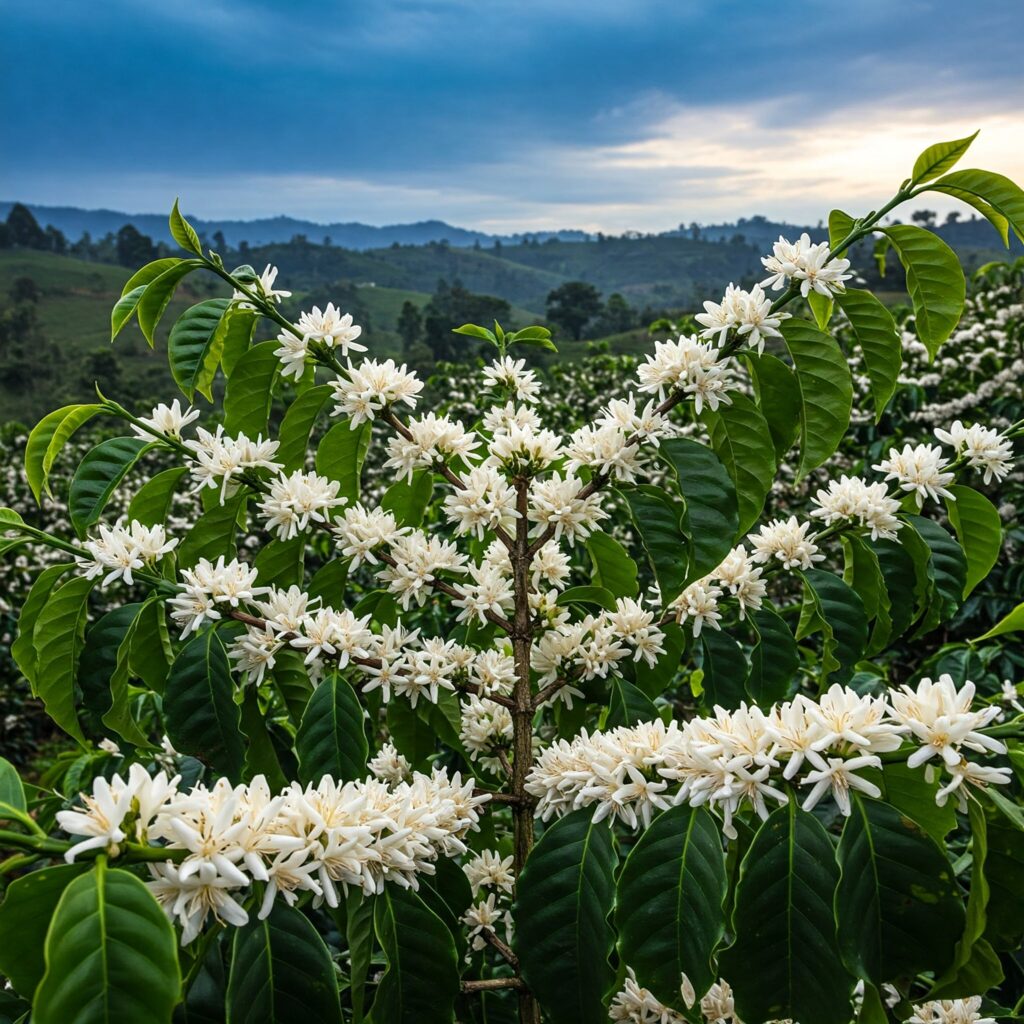
Stage 4: Fruit Development – The Slow Development of the Precious Cherry
After flowering and successful pollination, the ovaries of the flowers begin to develop, giving rise to the fruits known as coffee cherries. This stage of fruit development is a gradual process that can last several months (between 6 and 9 months for Coffea arabica), depending on the variety, altitude, and climatic conditions. During this time, the cherries go through different phases of growth and development, from a small size and green color to reaching their final size and beginning to change color to yellow, orange, or red (depending on the variety) as they ripen.
Management during fruit development requires constant monitoring for pests (such as the coffee berry borer and coffee leaf rust) and diseases (such as anthracnose). Irrigation should be regular and adjusted to the plant’s needs during this stage of high water demand. Nutrition is crucial, with a balanced supply of nitrogen, phosphorus, and especially potassium, which influences the size, weight, and quality of the fruits. Adequate shading, especially in regions of high solar radiation, can protect the fruits from thermal stress and promote uniform development.
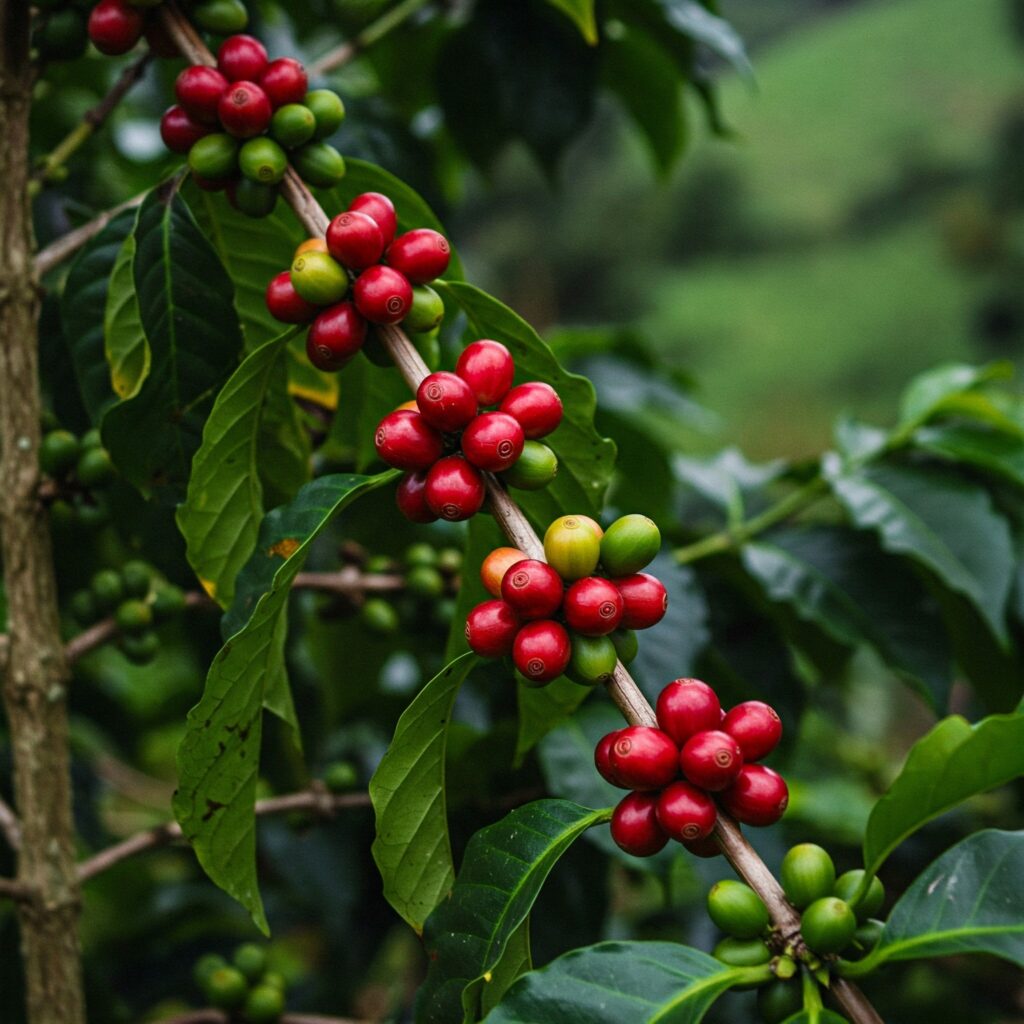
Stage 5: Maturation and Harvest – The Optimal Moment for Quality
Maturation is the final stage of fruit development, where the cherries reach their optimal quality point for harvest. During maturation, the cherries undergo significant changes in their color, sugar content, acidity, and composition of aromatic precursor compounds. Harvesting should be done by carefully selecting only the ripe cherries, as harvesting green or overripe fruits can negatively affect the quality of the coffee.
Harvesting techniques vary by region and scale of production. Selective manual harvesting, where only ripe cherries are picked in successive passes, is generally preferred to ensure maximum quality. However, on large plantations, semi-mechanized or mechanized harvesting can be used, although this may result in less uniformity in the ripeness of the harvested fruits. Determining the optimal harvest time is based on observing the color of the cherries and, in some cases, on measuring parameters such as soluble solids content (Brix).
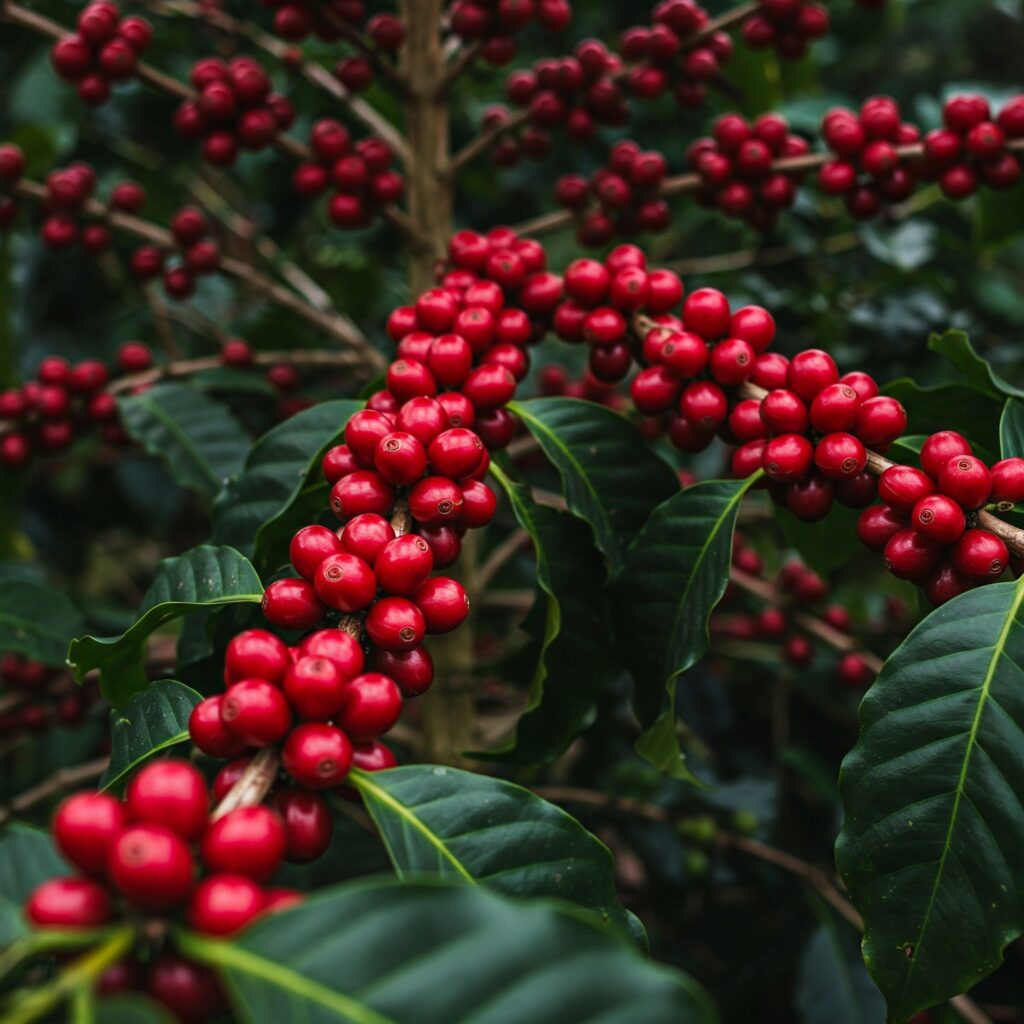
Stage 6: Post-Harvest – Processing the Fruit to Reveal the Bean
Post-harvest processing is a critical stage that has a significant impact on the final quality of the coffee. Immediately after harvesting, the cherries must be processed using different methods, the main ones being the wet method (washed) and the dry method (natural).
- Wet Method: Involves removing the pulp of the cherries, fermenting the beans with their mucilage, washing to remove fermentation residues, and drying the parchment beans to reach an adequate moisture level for storage. This method generally produces coffees with higher acidity and pronounced fruity and floral notes.
- Dry Method: The whole cherries are dried in the sun on patios or raised beds until the moisture content of the bean reaches the desired level. Then, the dry husk and parchment are removed. This method tends to produce coffees with more body, sweetness, and nutty and chocolatey notes.
Each step of post-harvest processing, from pulping to drying, must be carried out meticulously and under controlled conditions to preserve the inherent qualities of the coffee and avoid the appearance of defects.
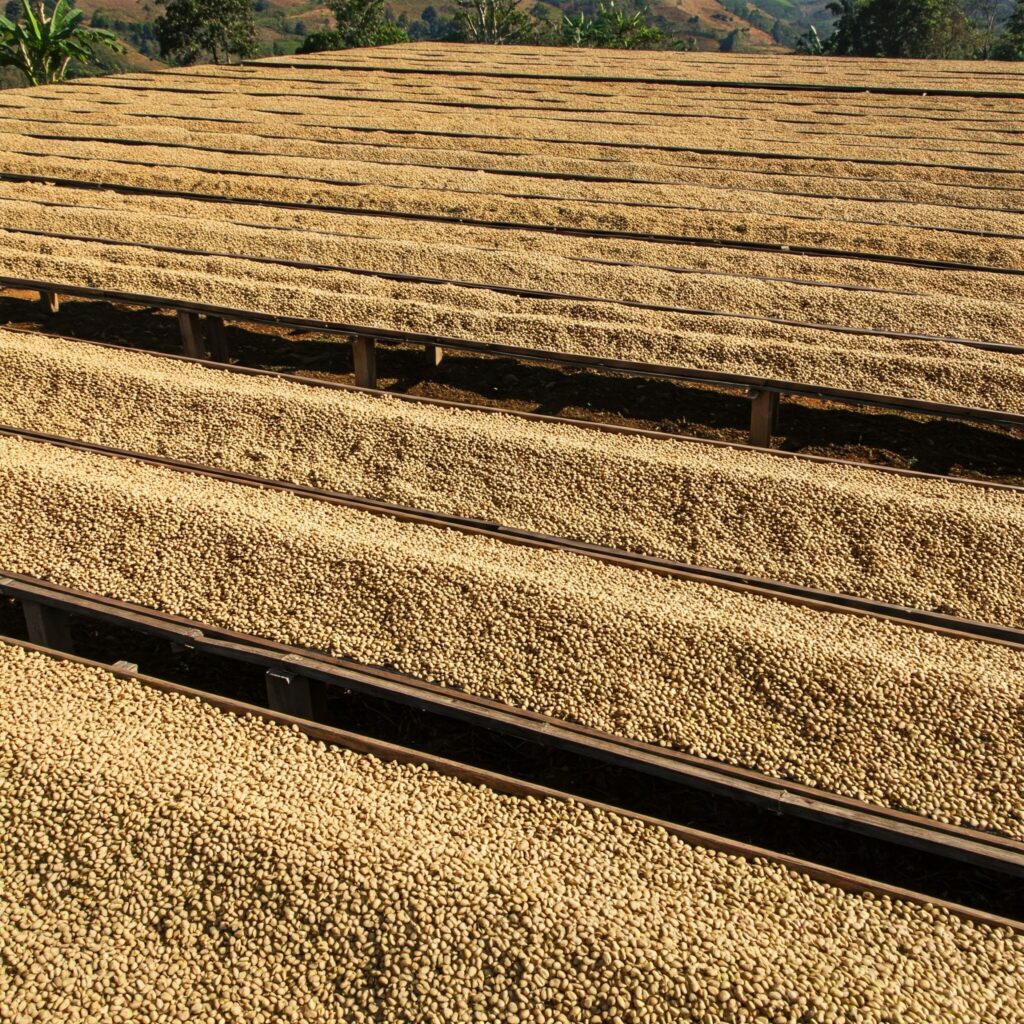
Advanced Strategies to Optimize Coffee Production and Quality
To achieve superior quality coffee production and maximize yield, producers can implement advanced agronomic strategies at each phenological stage:
- Selection of High-Potential Varieties: Choosing varieties with high yield and quality potential, adapted to local agro-climatic conditions and resistant to major pests and diseases (such as coffee leaf rust), is fundamental.
- Integrated Pest and Disease Management (IPM): Implementing strategies that combine biological, cultural, genetic, and chemical control in a rational and timely manner to minimize the use of synthetic pesticides and protect the health of the ecosystem.
- Balanced and Foliar Nutrition: Applying fertilizers based on soil and foliar analyses, adjusting doses and nutrient types to the specific needs of each phenological stage. Foliar fertilization can complement soil nutrition, especially during periods of high nutrient demand such as flowering and fruiting.
- Shade Management: Using appropriate shading systems (with diversified shade trees) to regulate sunlight, temperature, and humidity, creating a favorable microclimate for coffee development and promoting biodiversity.
- Efficient Irrigation: Implementing efficient irrigation systems (such as drip irrigation) and scheduling irrigation based on the crop’s water needs and climatic conditions to avoid water stress and optimize water use.
- Strategic Pruning: Performing formation, maintenance, and renovation pruning to optimize the bush’s structure, improve aeration and light penetration, facilitate harvesting, and stimulate the production of productive shoots.
- Detailed Monitoring and Records: Keeping detailed records of management practices, climatic conditions, flowering, fruiting, and the incidence of pests and diseases allows for informed decision-making and timely adjustments to management strategies.
- Selective Harvesting and Training: Training pickers to perform selective harvesting of ripe cherries is essential to ensure coffee quality. Implementing quality-based incentive systems can improve picker motivation.
- Controlled Post-Harvest Processing: Implementing standardized and controlled post-harvest processing protocols, paying attention to factors such as water quality, fermentation times, and drying conditions, to ensure bean consistency and quality.
Conclusion: A Commitment to Excellence in Every Stage of Cultivation
Mastering the phenological phases of coffee and applying precise and timely agronomic management strategies at each stage is an ongoing commitment to excellence in cultivation. From seed germination to meticulous post-harvest processing, each phase offers an opportunity to positively influence the quality and yield of this prized bean. By adopting a comprehensive approach based on scientific knowledge and best agricultural practices, coffee producers can achieve superior levels of productivity, sustainability, and quality in their harvests.
References:
- ICO (International Coffee Organization). (2018). Growing Coffee: A Guide.
- Talhinhas, P., Batista, D., Diniz, I., & Vieira, F. (2017). The coffee leaf rust pathogen Hemileia vastatrix : one and a half centuries of research. Molecular Plant Pathology, 18(8), 1039-1051.
- [Include other references of specific agronomic and physiological studies on the phenological stages of coffee].
- [Cite manuals of good agricultural practices for coffee cultivation from research or agricultural extension institutions].
Keywords: Coffee, phenological stages, germination, vegetative growth, flowering, fruiting, maturation, harvest, post-harvest, agronomic management, pruning, nutrition, irrigation, coffee quality, yield, Coffea arabica.
 AgronoBlog – Agriculture Blog
AgronoBlog – Agriculture Blog 